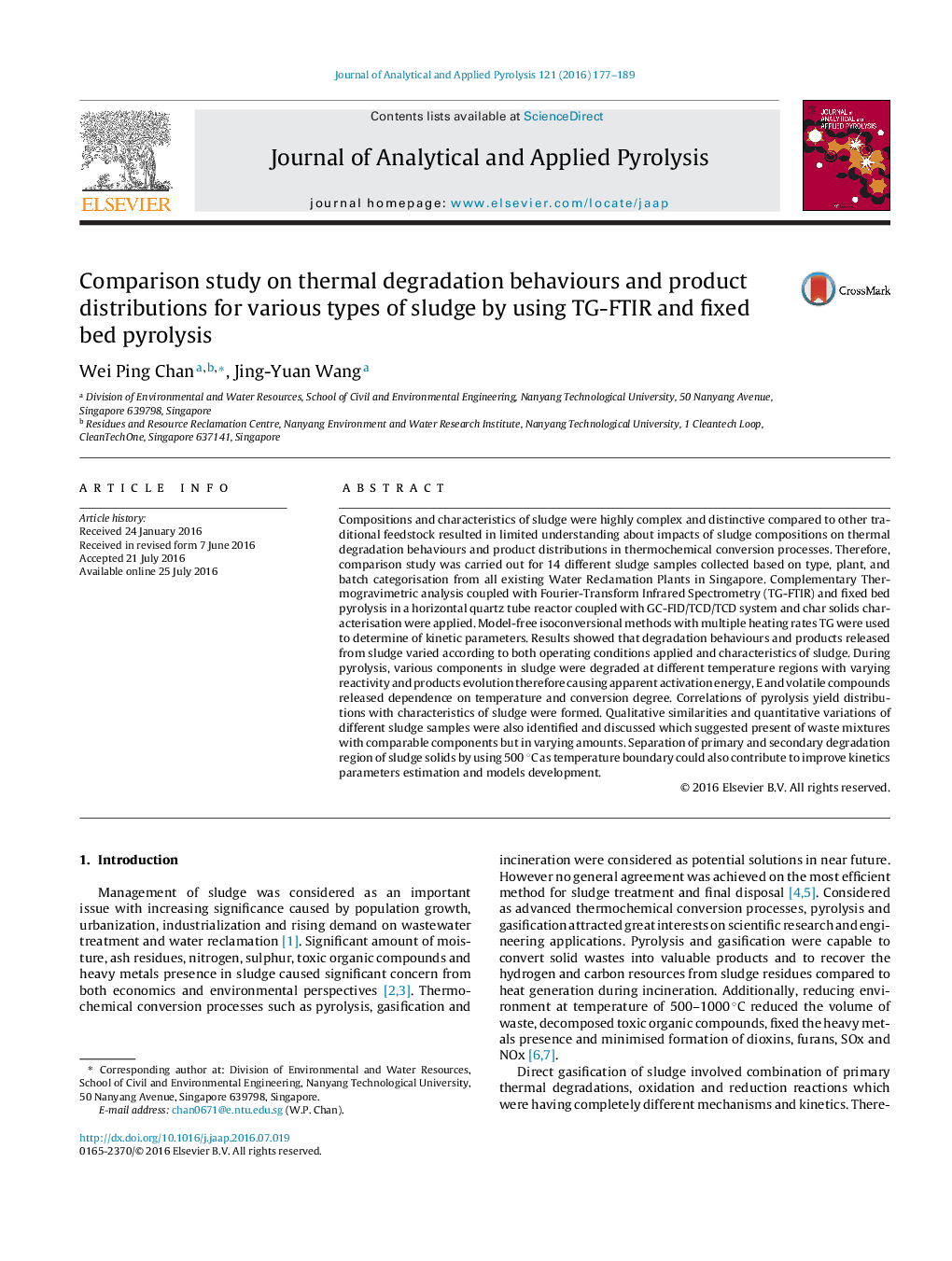| Article ID | Journal | Published Year | Pages | File Type |
|---|---|---|---|---|
| 5134721 | Journal of Analytical and Applied Pyrolysis | 2016 | 13 Pages |
â¢Thermal degradation behaviours and products distribution for sludge pyrolysis.â¢Complementary analysis based on TG-FTIR and fixed bed pyrolysis.â¢Extensive comparison study of 14 different sludge samples.â¢Correlations of pyrolysis yields distribution with characteristics of sludge.â¢Qualitative similarity and quantitative variation indicated comparable composition.
Compositions and characteristics of sludge were highly complex and distinctive compared to other traditional feedstock resulted in limited understanding about impacts of sludge compositions on thermal degradation behaviours and product distributions in thermochemical conversion processes. Therefore, comparison study was carried out for 14 different sludge samples collected based on type, plant, and batch categorisation from all existing Water Reclamation Plants in Singapore. Complementary Thermogravimetric analysis coupled with Fourier-Transform Infrared Spectrometry (TG-FTIR) and fixed bed pyrolysis in a horizontal quartz tube reactor coupled with GC-FID/TCD/TCD system and char solids characterisation were applied. Model-free isoconversional methods with multiple heating rates TG were used to determine of kinetic parameters. Results showed that degradation behaviours and products released from sludge varied according to both operating conditions applied and characteristics of sludge. During pyrolysis, various components in sludge were degraded at different temperature regions with varying reactivity and products evolution therefore causing apparent activation energy, E and volatile compounds released dependence on temperature and conversion degree. Correlations of pyrolysis yield distributions with characteristics of sludge were formed. Qualitative similarities and quantitative variations of different sludge samples were also identified and discussed which suggested present of waste mixtures with comparable components but in varying amounts. Separation of primary and secondary degradation region of sludge solids by using 500 °C as temperature boundary could also contribute to improve kinetics parameters estimation and models development.
